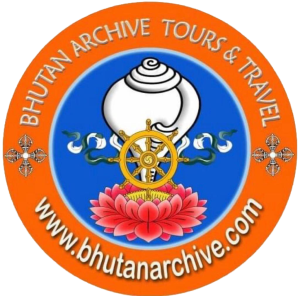- Tashichho Dzong: Begin your journey at the heart of Thimphu with Tashichho Dzong, a stunning fortress that houses the throne room and government offices. The intricate Bhutanese architecture and the serene surroundings make it a must-visit.
- Buddha Dordenma Statue: Marvel at the gigantic Buddha Dordenma Statue, overlooking the city. This bronze statue, standing at 169 feet, is an iconic symbol of peace and happiness.
- Folk Heritage Museum: Delve into Bhutanese culture at the Folk Heritage Museum. Traditional artifacts, exhibits, and a recreated rural home provide insight into the country’s rich heritage.
- National Memorial Chorten: Explore the spiritual ambiance of the National Memorial Chorten, a stupa dedicated to world peace. Join locals in circumambulating this sacred site.
- Motithang Takin Preserve: Encounter Bhutan’s unique national animal, the takin, at the Motithang Takin Preserve. This sanctuary allows you to witness these rare creatures up close.
- Changangkha Lhakhang: Visit Changangkha Lhakhang, an ancient temple perched on a ridge. The site offers breathtaking views of Thimphu and is considered auspicious for newborns.
- Thimphu Art Gallery: Immerse yourself in Bhutanese art at the Thimphu Art Gallery. The vibrant displays showcase traditional and contemporary works by local artists.
- National Textile Museum: Discover the intricate art of Bhutanese weaving at the National Textile Museum. The exhibits narrate the story of Bhutanese textiles through the ages.
- Weekend Market: Join the bustle of the Weekend Market, where locals gather to sell fresh produce, handicrafts, and more. It’s a lively experience filled with colors and aromas.
- Simtokha Dzong: Conclude your journey at Simtokha Dzong, the oldest fortress in Bhutan. Admire its architecture and the array of religious paintings and sculptures.
In Bhutan, there are over nineteen languages spoken, with many facing the threat of extinction. English, widely spoken, stands apart. Most Bhutanese languages, excluding Nepali, bear Tibeto-Burmese influence, with some also showing Sino-Tibetan origins.
Tshangla, dominant among Eastern Bhutanese, and Lhotsam, prevalent among Southern Bhutanese, are endangered, as are Monkha, Lhokpu, and Gongduk, perilously close to extinction. Monkha is spoken by Monpas residing in the scattered areas of the Black Mountain in central Bhutan. Lhokpu, an ancient variant of Dzongkha, is spoken by the Doyas in the southwestern region. Gongduk, spoken by fewer than a thousand people, is found along the Kurichu River in the eastern district of Mongar.
The landscape of Bhutan has historically fostered isolated communities, likely contributing to the proliferation of distinct languages and dialects.
Bhutan’s National Language
Dzongkha, Bhutan’s national language, shares its roots with Dranjoke, spoken by the native population of highland Sikkim, and Choke, the language of the clergy. It holds sway in western Bhutan. Alongside English, widely spoken, is Tshangla, also known as Sharchopkha.
English serves as the primary language in schools and government offices, with Bhutanese students studying Math, Science, and History in this language, potentially diminishing the use of Dzongkha. To preserve and promote Dzongkha, His Majesty King Jigme Singye Wangchuck established the Dzongkha Development Commission. Today, many Bhutanese pop songs contribute to the resurgence of Dzongkha, appealing to both the younger and older generations.
COMPANY
QUICK LINKS
CONTACT
- Opp. to RICBL, Norzin Lam-I,
- Thimphu 11001, Bhutan
- bhutanarchive@gmail.com
- +975 77622995 | +975 17622995
